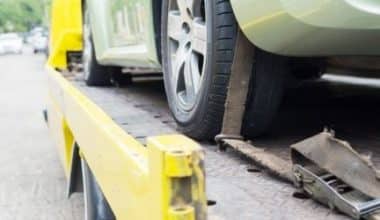Reverse Auctions are the most popular eAuction methods because they produce the highest savings when there is enough competition. Participants compete directly against each other online in this type of auction by sending lower and lower bids. If this concept is new to you, then take a deep breath and read through. This post will basically cover all you should know about how a reverse auction works including its examples and websites.
The reverse auction has become a common feature of internet-based online auction tools as the internet has advanced. Multiple sellers may communicate with a buyer in real-time using the reverse auction technique.
For equipment, raw materials, and services like customer care and accounting, the reverse auction is seen as a competitive procurement process. The approach is used by large companies and government agencies.
In contrast to a Forward Auction (as we know it from Auction Houses), several sellers bid for the buyer’s business by incrementally lowering the price of the product or service.
What is a Reverse Auction?
A reverse auction is a kind of auction where sellers bid for prices at which they will be willing to sell their goods and services. In a traditional auction, a seller places an item on the market, and buyers place bids before the auction ends, at which point the item is goes to the highest bidder.
On the flip side, a buyer submits a demand for a certain good or service in a reverse auction. Sellers then put bids for the sum they are willing to be paid for the product or service, with the lowest bidder winning at the end of the auction. In other words, this is the direct opposite of how a conventional auction sholud go. But then the question of how does it works pops.
More on that in the next section…
How Does It Work?
To hold a Reverse Auction, you’ll need an e-sourcing platform that automates the eAuction.
Suppliers will usually see their place in the eAuction after making the first bid during the Reverse Auction. The location may be shown using a traffic light system (green, yellow, or red indicators), rating, or complete transparency, allowing all suppliers to see the best bid (s). During the Reverse Auction, it is up to the buyer to determine what should be shown to the suppliers.
The Reverse Auction will last at least the predetermined period (30 minutes, for example), but it will immediately extend by two minutes any time a bid is made within the last two minutes of the Auction. It runs until there are no more bids in the final two minutes of the auction.
Reverse Auctions Types
The following are the various forms or rather types of reverse auctions
Ranked Reverse Auctions
These are one of the most popular auction styles. This form of auction can be useful for a variety of projects and industries, but not necessarily for all. When a company wants to engage several bidders who, in their opinion, are most likely to bid in the same price range, they use ranked auctions. The primary information available to all suppliers in this type of auction is the location or rank of the bidders in comparison to other bids.
The disadvantage of ranked auctions however is that potential bidders in the second and third places will become extremely demotivated. Eventually, they may believe it is unlikely for them to win the bid. As a result, it must be notified from time to time that, while the price is an important factor, the communication does not have to be automatically granted to the bidder who submits the lowest bid.
Open Bidding
The term “open auction” may also refer to an English auction or an open outcry. Both bidders will be kept informed of the actual value of the winning or leading bid in this type of bid. Bidding in this form of auction normally begins at a high level, or whatever the buyer defines as maximum, and then gradually decreases.
Dutch Auction
This form of Reverse bidding is most often seen in public stock offerings. It provides a great deal of versatility. However, it also has the potential to lower costs and complicate the supply chain process.
Japanese Auction
The buyers give the suppliers an opening price in this sort of auction. Suppliers will only participate if they approve the opening price, which means they commit to all of the conditions in full.
Reverse Auction Examples
One of the most prominent examples of a reverse auction is bidding on government contracts. Governments define project specifications, and bidders, who are licensed contractors, must come up with a cost structure to complete the project in this form of auction. Other examples of a reverse auction include:
- Reverse bidding is beneficial to construction or real estate firms because it offers a forum where bids can be put directly on an upcoming project for a new client.
- If a public sector company is looking for a contract, reverse bidding could be an option.
How to Conduct a Reverse Auction?
The steps for conducting a reverse auction are as follows:
- Identification of the spend type, i.e., ensuring that the bid is suitable for use in a reverse auction.
- Assuring that there are at least two vendors: It is high due to the fact that a reverse auction involves many sellers.
- Assuring that the participants have prior business experience or are or have been business owners.
- Choosing the best reverse bidding software.
- Clearly specifying all of the requirements.
- Bringing in sellers: holding a mock auction; ensuring that sellers are given enough time.
- Conducting the live auction; expressing gratitude to all participants (suppliers).
The Advantages of a Reverse Auction
The following are some of the advantages of a reverse auction:
- Faster- Since this form of auction is so fast, the buyer and seller will save a significant amount of time researching the market.
- No wastage- The buyer can clearly express all of his criteria, resulting in minimal to no waste of time and other resources.
- Easy comparison- The consumer may compare goods and services and choose the best option among them.
- The best price- The buyer will obtain possession of the goods and services at the best price possible.
Drawbacks
It’s important to keep in mind that the reverse auction isn’t appropriate for every product or service. Reverse auctions aren’t always the best option for goods and services that can only be offered by a few sellers. To put it another way, a reverse auction only works when there are multiple vendors offering identical products and services in order to maintain the competitive process’s credibility.
Furthermore, there may be a desire for sellers to concentrate on the lowest bids, with little concern for the quality of the products or services. The adage “cheap for a reason” can apply in situations where a buyer is dissatisfied with the quality of the lowest-priced collection of goods or services obtained through a reverse auction.
Last but not least, a bidder must be diligent in communicating all of the requirements to the auction participants; otherwise, the winning bid will not include all of the desired characteristics.
Reverse Auction Websites
Some of the most popular reverse auction websites are general platforms for auctions. However, most of these websites often offer reverse auction services. So starting out, ensure you are 100% sure of what you are getting into. In other words, if what you are looking for is a reverse auction, search for a website that meets that need.
However, these websites below should give you a heads-up. They are the most readily available ones out there.
Autoebid.co.uk, GovLiquidation.com, CQout.com, Ubid.com, Swoopo.co.uk, Bidz.com, BumblebeeAuctions.co.uk etc.
REVERSE AUCTION WEBSITES
Ovbiously, there should be more out there, so if you can remeber any efficient one, drop it in the comment section.
What Is the Difference Between Reverse Auction and Forward Auction?
In a regular auction, which is also called a “forward auction,” buyers compete to get goods or services by offering higher and higher prices. In a reverse auction, on the other hand, the sellers compete to get the buyer’s business, and prices usually go down as the sellers try to outbid each other.
How Do You Win a Reverse Auction?
Most likely, a reverse auction won’t happen unless there are at least two qualified suppliers or vendors for the good or service you want. If not, you would just write up an RFP and hope that the supplier would respond with a low price on the RFP instead of going through the auction process.
What Is the Main Downside of a Reverse Auction?
Loss possibility
In a reverse auction, one of the biggest problems for the seller is that he doesn’t get to choose the price for his item. Often, he may end up lowering the prices a lot in order to win the bid. This could cause him to lose money on the deal.
When Should a Reverse Auction Be Used?
For example, reverse auctions are great for buying raw materials, finished goods, travel, printing services, capital equipment, components, and many other things. Reverse auctions work best when the price is a key negotiating point for the organization doing the buying.






